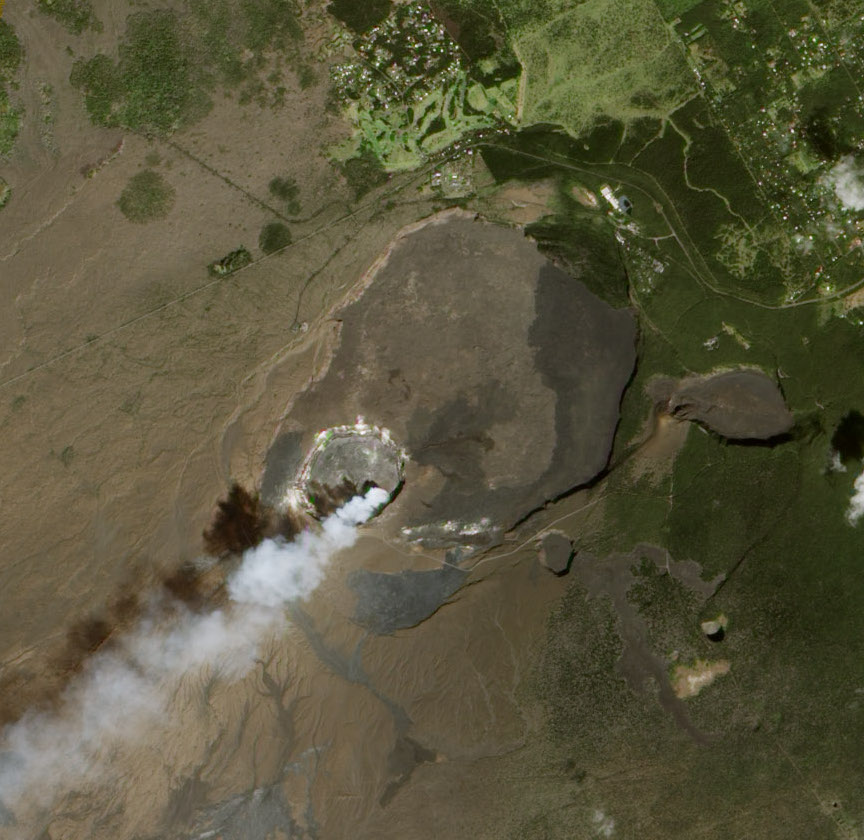An article in the Spring 2023 Cal Poly Engineering Advantage magazine issue caught my eye. It’s title: “Combating Climate Change on a Green-Sand Beach.”
The “green sand,” in this instance referring to refined olivine (the mineral), meanwhile, in its natural or unaltered state, is produced during volcanic eruptions. Its natural color is, more or less, olive green.
What makes this substance noteworthy is its purported ability to help purify air. Its one apparent downside, however, is olivine contains, as brought to bear in the Engineering Advantage “Climate Change” feature, toxic trace elements – metals like chromium, cobalt and nickel, and those, if introduced into ocean-ecosystem environments, may prove harmful to submerged life. (Qualifying statements: I would think all this would depend on the extent at which such trace metals are taken up by any marine life so impacted. Obviously, more needs to be learned in this regard. Research into this is ongoing).
As it relates and expanding upon this further, it is comforting to learn that a team from Cal Poly – one that included a retired environmental engineering department professor and two currently enrolled engineering students – traveled to Hawaii last summer for a month of fact-finding and data- and sample-collecting as part of research activities taking place at three independent Big-Island-based beaches (one black-, one white- and the green-sand beach), the purpose of which was to study sea life at each site. What effect does the beach-applied olivine have on area sea life? How does that compare to in-the-sea life off the remaining two evaluated “untreated” beaches. It is things along these lines that is trying to be learned.
In the larger context, the intent, as I understand it, is to spread quantities of this so-called “green sand” on various beaches around the world. It is when dissolved in seawater that olivine is highly effective at removing airborne CO2 and keeping it permanently stored away, as information at vesta.earth notes. As long as the olivine remains in its undisturbed state, the absorbed carbon is permanent. The possibility exists also that given a long enough time, the volcanic material that olivine is, could return to the source from which it originally came. Vesta, as it were and as I also understand things, is engaged in “coastal carbon-capturing” research activity. (Disclosure: As of this writing, no so-solicited company representative has responded to my request for added input).
The mineral’s cleansing abilities, meanwhile, go beyond just this. Olivine helps neutralize ocean acidity.
Potential rub
There is a nagging question, though. Any carbon that is stored in olivine’s crystalline structure, what happens to that upon the vulcanized substance being ground up into sand?
Here again, my understanding is that any and all retained carbon, upon the mineral being “granularized,” escapes back into the atmosphere. Which, if indeed this is the case, means that after being dissolved in sea water, presumably, the olivine must be able to absorb more atmospheric carbon than what was released into the air upon it being ground up, that is, in order for green-sand olivine to be truly effective as a carbon-from-air cleansing agent. That’s the rub.
At the same time, let’s not forget about the ocean-ecosystem polluting aspect and the potential for damage to be caused to aquatic life. Even if the olivine turns out to be exceptional at capturing and storing carbon dioxide from the atmosphere and absorbing and neutralizing oceanic acid, it cannot be at the expense of causing undue harm to the life that happens to make the ocean its home.
It is incumbent on researchers – like those of the aforementioned Cal Poly team and others – to do a top-to-bottom evaluation in an effort to help uncover the seven seas’ mysteries where using granular olivine is concerned as it has to do with establishing its place as a potential tool in the toolkit to facilitate a climate course correction.

Notes
In an earlier version, the portion of the paragraph below (in bold typeface) was not accurate.
“As it relates and expanding upon this further, it is comforting to learn that a team from Cal Poly – one that included a retired environmental engineering department professor and two currently enrolled engineering students – traveled to Hawaii last summer for a month of fact-finding and data- and sample-collecting as part of research activities taking place at three independent Big-Island-based beaches (one black-, one white- and the green-sand beach), the purpose of which was to learn in what ways the olivine affects ocean life at each of the sites and then make comparisons, from which determinations can then be rendered.”
The information is now correct.
Last updated on Jul. 20, 2023 at 12:54 p.m. Pacific Daylight Time.
⁃ Alan Kandel
Copyrighted material.
Above and corresponding, connected home-page featured images: NASA